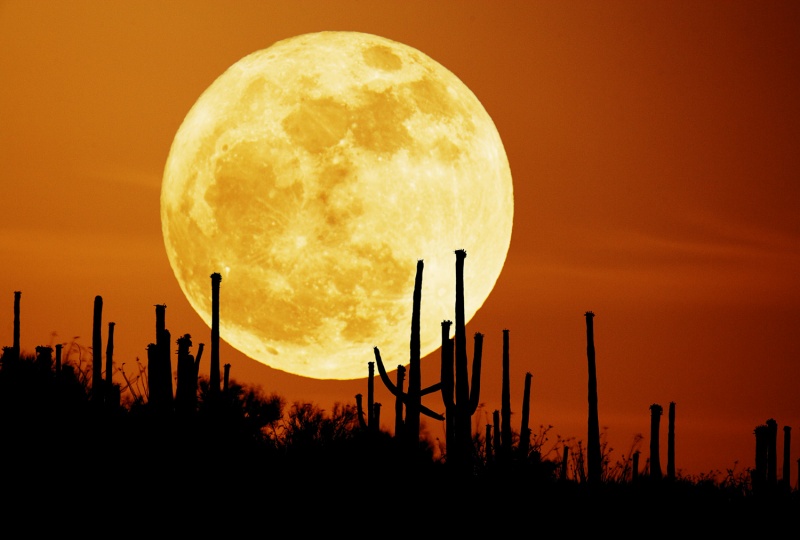[/caption]
Actually, the official time was September 15 at 5:13 a.m. EDT, but missing the exact time isn’t going to stop a little beauty from happening tonight. What else can I say except “Come a little bit closer.. Hear what I have to say. Just like children sleepin’… We could dream this night away. But there’s a full moon risin’… Let’s go dancin’ in the light. We know where the music’s playin’… Let’s go out and feel the night…”
I love Harvest Moon time – mainly because there’s so much folklore and legend attached to it. Here in the heartland, we associate it with tractors in the field, working late into the night gathering the harvest by the light of our nearest astronomical neighbor. It’s a romantic and fanciful thought – especially since modern tractors just combine the stuff down with headlights approximately bright enough to land a Boeing 747. However, it’s still a lot of fun to think about old cultures like the Norse folks who believed the Moon granted them Loki’s blessing for plenty. I’ve heard it called the Singing Moon, too… A time for rest after harvest, sit around, sing some songs, smoke a peace pipe. Or, you can celebrate with the Celtics. They called it the Wine Moon, eh? No matter what your choice may be, the whole object is to be mellow.
But, hey! What’s mellow without a little science behind it? What constitutes the Harvest Moon most of all is that it’s closest to Equinox. Just this little tidbit and the change of seasons ought to give you a clue of what’s going on. Most of time during the year, the Moon comes along about 50 minutes later each night, but as the tilt of our Earth is gradually changing, that time is a bit shorter – by around 20 minutes for several evenings in a row. Why? The answer is easy enough. The ecliptic – or plane of Earth’s orbit around the sun – makes a narrow angle with respect to the horizon in the evening in autumn.
Is it really more orange or yellow than normal? How about larger? Oh, yes. You want those science facts, don’t you? Sure! Why not… Oftentimes we perceive the Harvest Moon as being more orange than at any other time of the year. The reason is not only scientific enough – but true. Coloration is caused by the scattering of the light by particles in our atmosphere. When the Moon is low, as it is now, we get more scattering effect and it truly is a deeper orange. The very act of harvesting itself also produces dust and oftentimes that color will last through the whole night. As for larger? Well, that’s just an illusion. Everyone knows the Moon looks larger on the horizon, but did you know this is a psychological phenomenon and not a physical one? Prove it to yourself by looking at the rising Moon upright…it looks larger, doesn’t it? Now stand on your head, or find a comfortable way to view it upside down…now how big is it?
Go on out tonight and enjoy the Harvest Moon… “Harvest moon… I see the days grow shorter. I feel the nights grow cold. Harvest moon… Young people feeling restless. Old people feeling old. Harvest moon… I sense the darkness clearer. I feel the presence here. Harvest moon… A change in the weather. I love this time of year. Harvest Moon….”


Thanks Tammy! This should be easy. At times when I’m trying to look through my finder scope, I might as well be standing on my head. 🙂
heheheee… have you ever tried a right angle finder? i felt like a total jerk because i couldn’t find the moon with one!
Why doesn’t the moon in the photo look very circular? There seems to be a “pothole” at the top-left edge of the moon in the photo.
Tammie,
You are a true romantic
Wonderful
Freiddie, that’s probably caused by atmospheric diffraction. It’s the same phenomenon that often distorts the Sun in sunsets and sunrises (and the origin of mirages).
In this picture it’s rather subtle, but I see other, smaller, irregularities in the lunar disc, at 6 o’clock, at 4 o’clock and at 7 o’clock.